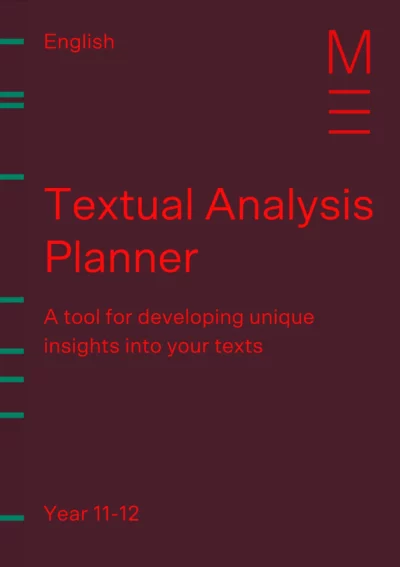Welcome to Matrix Education
To ensure we are showing you the most relevant content, please select your location below.
Select a year to see courses
Learn online or on-campus during the term or school holidays
Learn online or on-campus during the term or school holidays
Learn online or on-campus during the term or school holidays
Learn online or on-campus during the term or school holidays
Learn online or on-campus during the term or school holidays
Learn online or on-campus during the term or school holidays
Learn online or on-campus during the term or school holidays
Get HSC exam ready in just a week
Select a year to see available courses
Science guides to help you get ahead
Science guides to help you get ahead
Struggling with text analysis? Not sure how to spot literary techniques or explain them in essays? We’ve got you covered. Learn how to break down texts, find hidden meanings, and write with confidence.

Join 75,893 students who already have a head start.
"*" indicates required fields
To succeed in Year 12 English, you must show strong skills in text analysis and evaluation. You need to be able to break down texts and evaluate their meaning, value, and significance. This means looking closely at how a text is structured, the techniques the author uses, and the ideas they are trying to communicate. These skills help you think critically, write strong essays, and communicate effectively.
For a full list of key literary techniques, check out our English Literary Techniques Toolkit.

A step-by-step guide to writing exceptional textual analysis essays for VCE English. Fill out your details below to get this resource emailed to you. "*" indicates required fields
FREE VCE Text Analysis Essay Guide

FREE VCE Text Analysis Essay Guide
Text analysis is about breaking down a text into its key parts—form, structure, and language features—to understand how the composer communicates meaning. By interpreting these elements, you can see how different techniques influence the reader and shape the message of the text.
In VCE and HSC exams, you must:
The key to achieving high marks is by having a sophisticated analysis of language and structure.
By studying literary techniques like symbolism, irony, and imagery, you learn to read between the lines and interpret deeper meanings. Identifying how authors shape perspectives helps you evaluate themes, context, and purpose more effectively.
Mastering analytical writing strengthens your evaluative essays and extended responses. When you can identify and explain techniques like tone, point of view, and diction, you build better arguments, write with confidence, and score higher marks.
Text analysis isn’t just for English exams! It’s useful in university courses like law, media, and science, and even in everyday life when evaluating news, social media, or persuasive writing.
Before writing your text analysis, it will help you to follow these steps and the key questions within them about the text that allow you to understand its situation or position, expression, and meaning.
Crucial to analysing the text is understanding and knowing its composer, audience, purpose, and context.


Analyse how the composer creates the text:
Explain how the narrative point of view, voice, and word choice reveal the subjectivity of the narrator or another character:
Analysing how a text is organised and how one part of the text relates to another:
Analyse how the plot and characters develop over the text:
Recognise the presence of other text and analyse how this shapes meaning:
Analyse how the composer chooses language to shape our response:
Analyse how the composer uses language to express ideas creatively:
Text analysis requires understanding how composers use form, structure, and language to communicate meaning. By developing strong analytical skills, students can succeed in English assessments, deepen their critical thinking abilities, and enhance their communication skills for life beyond school.
Level up how you analyse texts and take notes with expert strategies and templates! Fill out your details below to get this resource emailed to you. "*" indicates required fields
Download your FREE Textual Analysis Planner

Download your FREE Textual Analysis Planner
Written by Matrix English Team
The Matrix English Team are tutors and teachers with a passion for English and a dedication to seeing Matrix Students achieving their academic goals.© Matrix Education and www.matrix.edu.au, 2023. Unauthorised use and/or duplication of this material without express and written permission from this site’s author and/or owner is strictly prohibited. Excerpts and links may be used, provided that full and clear credit is given to Matrix Education and www.matrix.edu.au with appropriate and specific direction to the original content.